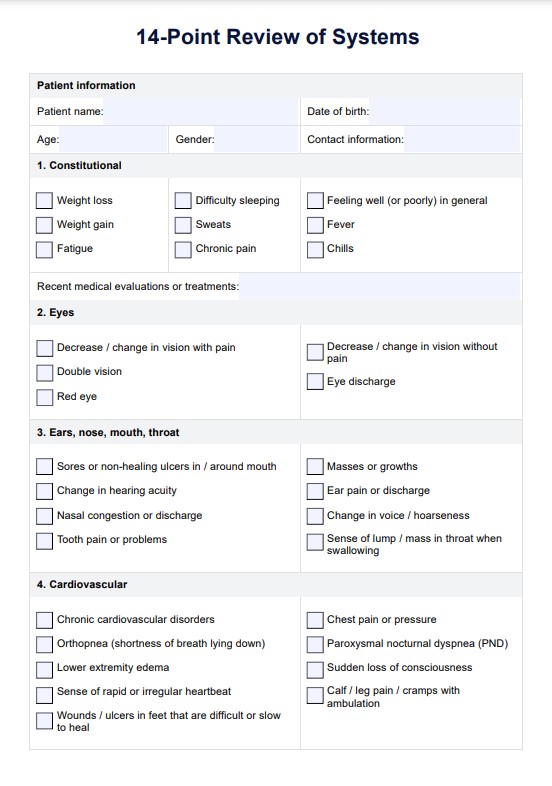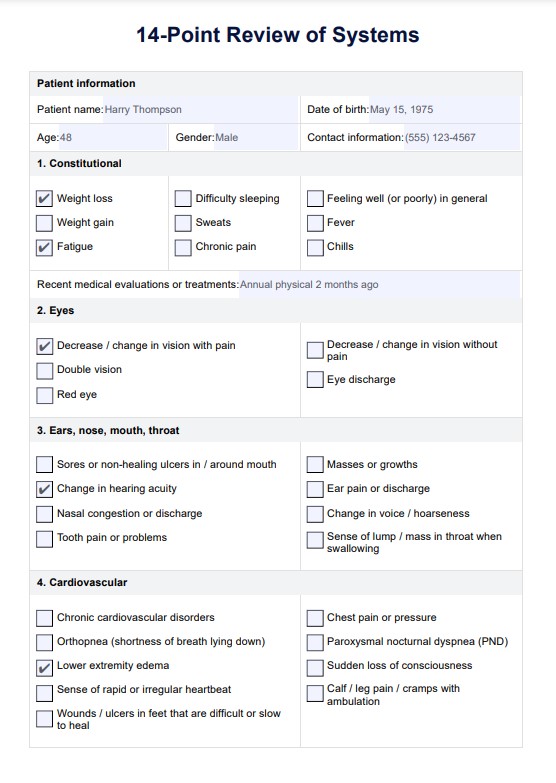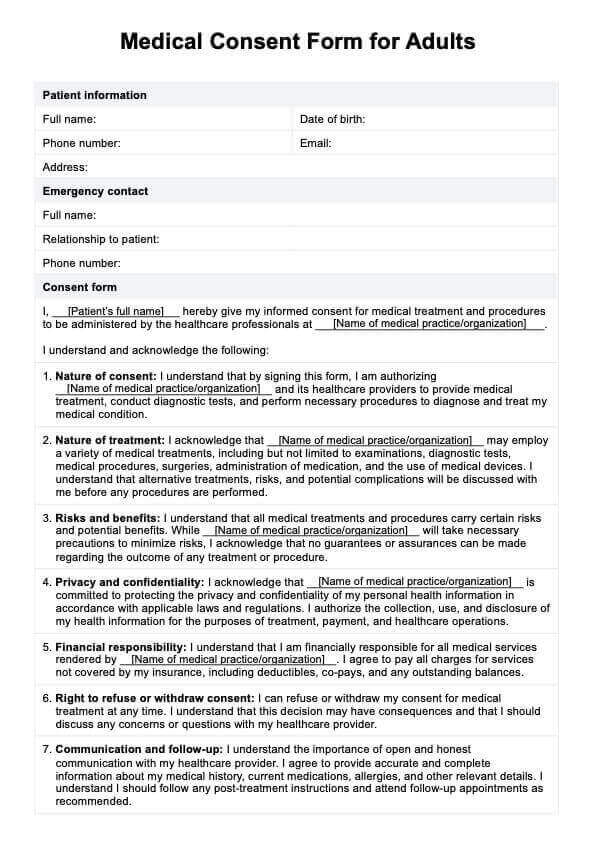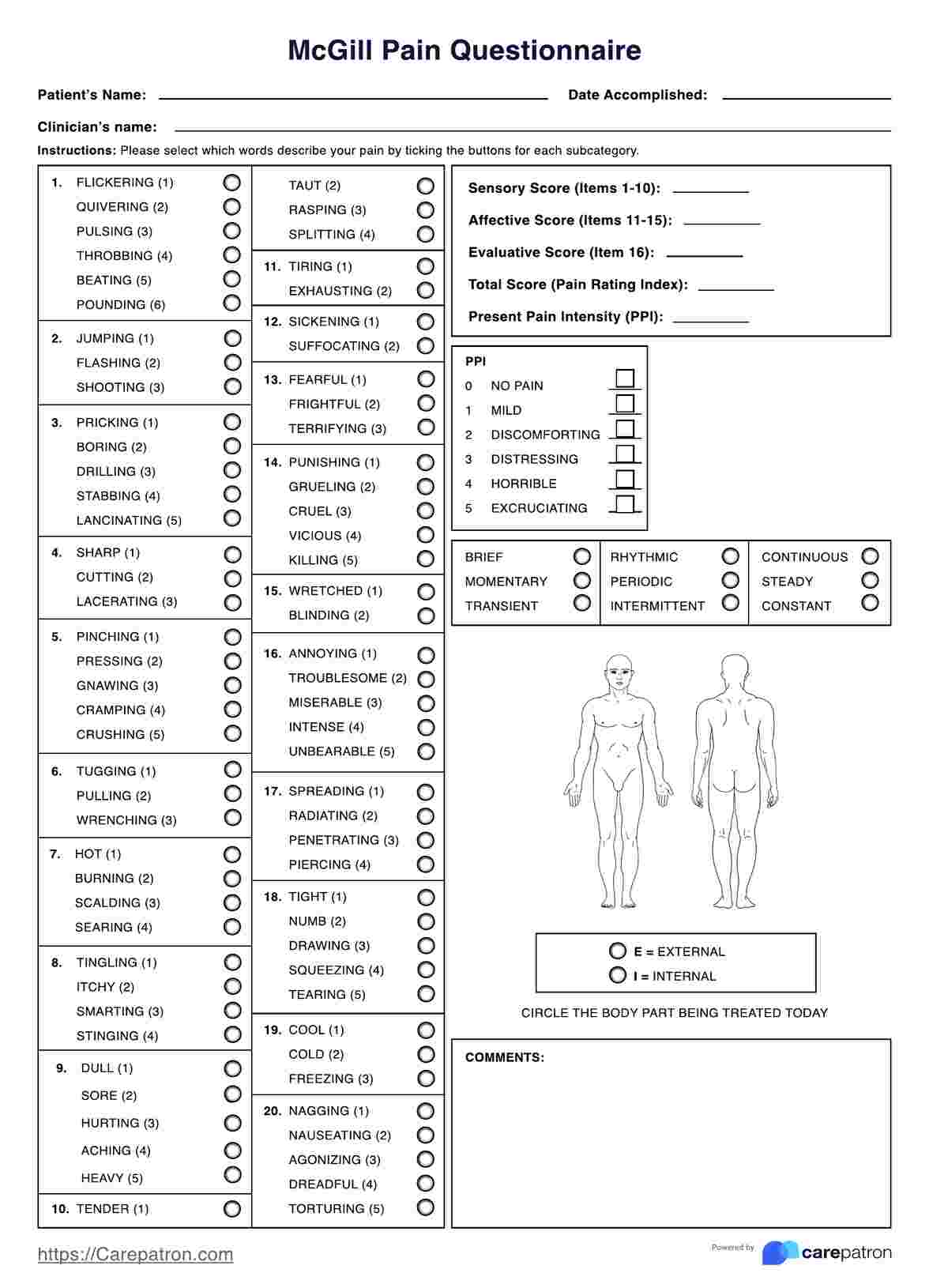14-Point Review Of Systems Template
Streamline patient assessments with our 14-Point Review of Systems Template as a valuable screening tool for early detection and diagnosis of various health conditions.


What is a 14-point review of systems?
A 14-point review of systems (ROS) is a comprehensive approach healthcare practitioners use to systematically assess a patient's overall health status and identify potential medical concerns or symptoms across various body systems. This structured approach ensures a thorough evaluation, reducing the likelihood of overlooking significant issues.
The 14-point ROS assesses each organ system to identify potential medical concerns. It typically covers the following areas:
- General: Assessing for symptoms such as fever, chills, fatigue, weight changes, or overall malaise.
- Head, ears, eyes, nose, and throat (HEENT): Evaluating issues related to headaches, dizziness, vision problems, hearing difficulties, ear pain, sinus pain, or sore throat and discomfort.
- Respiratory: Exploring symptoms like cough, wheezing, shortness of breath, or chest pain associated with breathing.
- Cardiovascular: Assessing for chest pain, palpitations, edema (swelling), or other heart-related concerns.
- Gastrointestinal (GI): Investigating abdominal pain, nausea, vomiting, diarrhea, constipation, or changes in appetite or bowel habits, a GI review of systems or GI ROS can help diagnose conditions like gastrointestinal infections and digestive disorders.
- Genitourinary: Evaluating urinary frequency, urgency, incontinence, or discomfort related to the genitourinary system.
- Musculoskeletal: Exploring joint pain, muscle weakness, back pain, or other musculoskeletal issues.
- Neurological: Assessing for headaches, dizziness, numbness, tingling, or other neurological symptoms.
- Psychiatric: Evaluating mental health concerns, such as depression, anxiety, or changes in mood or behavior.
- Endocrine: Investigating symptoms related to hormone imbalances, such as heat or cold intolerance, excessive thirst, or hunger.
- Hematologic/lymphatic: Evaluating for easy bruising, bleeding, or swollen lymph nodes.
- Allergic/immunologic: Assessing for allergic reactions, skin rashes, or immune system disorders.
- Integumentary (skin): Examining skin lesions, rashes, or changes in moles or nails.
- Sleep: Evaluating sleep patterns, disturbances, or excessive daytime sleepiness.
Systematically reviewing each system allows healthcare practitioners to identify potential areas of concern and gather important information about the patient's chief concern that may assist in making an accurate diagnosis and developing an effective treatment plan (Phillips et al., 2017).
Do note that the 14-Point Review of Systems is sometimes called the Constitutional Review of Systems. Either one is commonly referred to as just Review of Systems.
14-Point Review Of Systems Template
14-Point Review Of Systems Template Example
Cardiovascular review of systems
The cardiovascular review of systems is a crucial component of the overall patient assessment process. It focuses specifically on evaluating the health and function of the heart and blood vessels. This comprehensive review aims to identify any potential cardiac or vascular issues that may require further investigation or management (Hagan & Hagan, 2023). A Cardiovascular Review of Systems Template can be a valuable tool during this process. It is important to follow up on any positive responses during the cardiovascular review of systems to further define the core dimensions of the symptom in question.
When conducting a cardiac review of systems, healthcare practitioners typically explore the following areas:
Chest pain
Chest pain, also known as angina, can be a significant symptom of underlying cardiovascular conditions, such as coronary artery disease, myocardial infarction (heart attack), or aortic dissection. It's essential to inquire about the location, severity, duration, and any factors that may exacerbate or alleviate the pain.
Palpitations
Palpitations refer to an abnormal awareness of one's heartbeat, which can indicate arrhythmias or other cardiac disorders. Patients may describe their heart as "racing," "fluttering," or "pounding."
Shortness of breath
Dyspnea, or shortness of breath, can be a symptom of various cardiovascular conditions, such as heart failure, valvular disorders, or pulmonary hypertension. It's important to assess the severity and timing of the symptom and any associated factors.
Fatigue and exercise tolerance
Assessing a patient's fatigue and exercise tolerance level can provide valuable insights into the cardiovascular system's ability to meet the body's demands. Reduced exercise tolerance may suggest underlying cardiovascular issues.
Through a review of systems, cardiovascular concerns can be subject to further diagnostic testing, such as electrocardiograms (ECGs), echocardiograms, or stress tests, to establish an accurate diagnosis and develop an appropriate treatment plan.
Musculoskeletal review of systems
The musculoskeletal review of systems (ROS) is crucial in patient evaluation. It concentrates on assessing the condition and functionality of the skeletal structure, joints, and muscles. This thorough review aims to identify any potential musculoskeletal problems or disorders that may necessitate further examination or treatment.
During a musculoskeletal ROS, the Musculoskeletal Review of Systems Template typically investigates the following areas:
Joint pain
Joint pain is a common musculoskeletal complaint and can be indicative of conditions such as osteoarthritis, rheumatoid arthritis, gout, or joint injuries. It's crucial to inquire about the location, severity, duration, and any factors that may exacerbate or alleviate the pain.
Muscle weakness or tenderness
Muscle weakness or tenderness can be a symptom of various musculoskeletal disorders, such as myopathies, muscle strains, or neurological conditions affecting the muscles. Healthcare practitioners should assess the distribution and severity of the weakness or tenderness.
Bone pain
Bone pain can be a sign of conditions affecting bone health, such as fractures, bone tumors, or metabolic disorders. The ROS musculoskeletal aspects should inquire about the location, severity, and duration of the pain and any associated trauma or other relevant factors.
Arthritis or rheumatoid arthritis
Arthritis, including rheumatoid arthritis, is a common musculoskeletal disorder characterized by joint inflammation, pain, and stiffness. It's crucial to assess the specific joints affected, the duration and severity of symptoms, and any associated factors, such as morning stiffness or joint deformities.
The review of systems for musculoskeletal areas helps healthcare practitioners identify potential areas of concern and determine the need for further diagnostic testing, such as imaging studies or laboratory tests, to establish an accurate diagnosis and develop an appropriate treatment plan.
How does it work?
Healthcare practitioners can follow these steps to make the most out of this resource:
Step 1: Patient interview
The process begins with a comprehensive interview, where the healthcare provider discusses each of the 14 systems with the patient. This conversation aims to uncover any symptoms, concerns, family history, or changes in health that the patient may have experienced.
Step 2: Systematic review
The healthcare provider then methodically reviews the organ systems in the template. This step involves asking specific questions based on the patient's chief concern and noting any positive or negative responses that indicate potential health issues of diagnostic significance.
Step 3: Accurate documentation
Recording all the patient's responses accurately in the template is crucial. This documentation is part of the patient's medical record and is essential for future reference and ongoing care.
Step 4: In-depth analysis
After completing the review, the healthcare provider analyzes the information to identify patterns, potential health issues, or areas requiring further investigation. This analysis is critical in forming a differential diagnosis and planning subsequent steps.
Step 5: Determining follow-up actions
Based on the review's findings, the healthcare provider decides if additional diagnostic tests, referrals to specialists, or other follow-up actions are necessary. This step is crucial in ensuring the patient receives appropriate and timely care.
What do the results mean?
The systems review results offer a comprehensive and nuanced understanding of a patient's health status. These results are pivotal in guiding the subsequent medical decisions and interventions.
Positive findings
Positive ROS results indicate symptoms or issues in specific systems. These findings are critical for healthcare providers as they can signal underlying health conditions that may require immediate attention or further diagnostic evaluation. For example, a positive finding in the cardiovascular system could suggest issues like hypertension or heart disease, necessitating a more in-depth cardiac assessment.
Negative findings
Conversely, negative findings, indicating the absence of symptoms in the reviewed systems, play a crucial role in the diagnostic process. They help exclude certain medical conditions, narrowing down the potential causes of the patient's presenting symptoms. This systematic elimination is key to formulating an accurate diagnosis.
Comprehensive health overview
The collective data from our Free 14 Point ROS provide a holistic view of the patient's health. This all-encompassing perspective is essential for creating a targeted and effective treatment plan, ensuring that all health aspects are considered and addressed.
Implications for patient care
The results from the ROS are instrumental in shaping the patient's healthcare journey. They inform the healthcare provider about the areas that require immediate attention and those that are stable, thereby aiding in prioritizing medical interventions.
References
Hagan, S. & Hagan, A.F. (2023). The review of systems and the physical exam. In: Wong, C.J., Jackson, S.L. (eds) The patient-centered approach to medical note-writing. Springer, Cham. https://doi.org/10.1007/978-3-031-43633-8_12
Phillips, A., Frank, A., Loftin, C., & Shepherd, S. (2017). A detailed review of systems: An educational feature. The Journal for Nurse Practitioners, 13(10), 681–686. https://doi.org/10.1016/j.nurpra.2017.08.012
Commonly asked questions
To document a review of systems (ROS), the healthcare provider should systematically review a checklist of body systems and ask the patient if they are experiencing any symptoms related to each system. The provider should then document any positive or pertinent negative findings for each system reviewed. This is typically done by using a standardized template or form that lists the various body systems.
The standard 14 reviews of systems provide a comprehensive evaluation of the body's major organ systems and physiological functions, including constitutional (e.g., fever, weight changes), eyes, ears/nose/mouth/throat, cardiovascular, respiratory, gastrointestinal, genitourinary, musculoskeletal, integumentary (skin), neurological, psychiatric, endocrine, hematologic/lymphatic, and allergic/immunologic factors.
The review of systems (ROS) cardiac exam evaluates the patient's cardiovascular health and function. During this part of the ROS, the healthcare provider will typically ask the patient about any symptoms related to the heart and circulatory system.

.jpg)













































































































